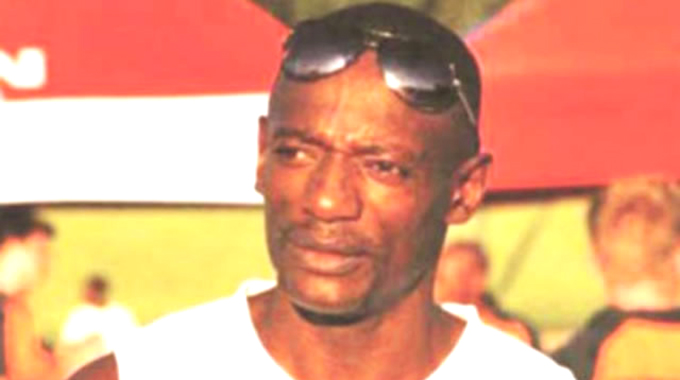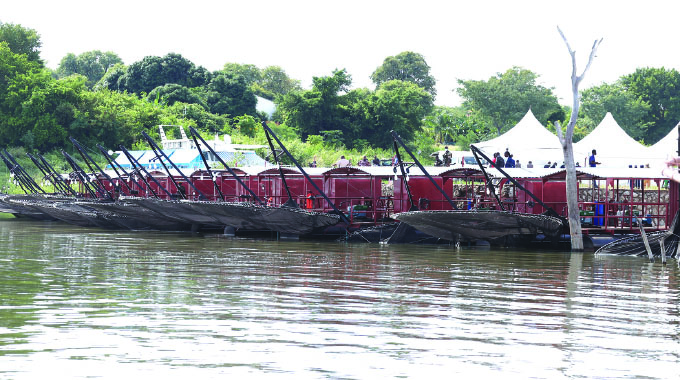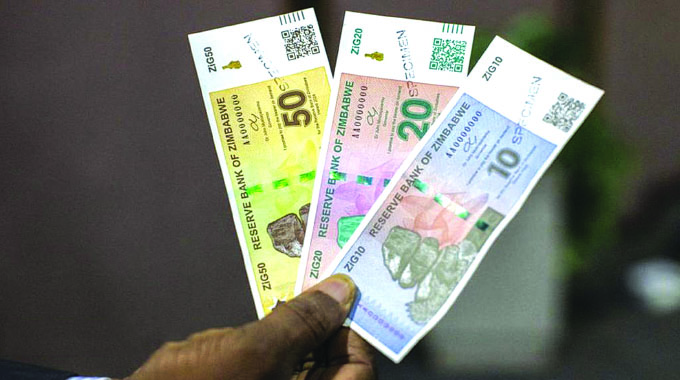Zupco buses: Standing passengers, tap-cards, solutions

Roselyne Sachiti Features, Health & Society Editor
Final Part
Moyo’s bus is early today. It’s 6.54am and as the bus taxies its way to the Greyhouse bus terminus in Norton, our hearts pound with joy.
The bus rattles to a grinding halt with a snapping puff from the air brakes. The second puff sound splashes water at the back, but everyone ignores it.
The bus’ arrival signals hope. It means those who manage to board will arrive in Harare just before 8am.
This is his second trip of the day, having made the first one as early as 5am. For us, the good thing is the first trip has removed the driver’s lethargy from sleep.
From Monday to Saturday, Moyo and Mabhau (the Inter Africa bus drivers) make sure they are on the road by 5am to pick the first batch of passengers to Harare.
I gather the drivers sleep on the buses, which they park overnight at Norton Police Station along Zvimba Road.
What a commitment? They are away from their families for five to six days! This solves the mystery of a blanket I always see in the luggage overhead compartment, each time I am on Mabhau’s bus.
Knowe residents salute them for their dedication and the efforts they put to ensure we are transported on time.
To show appreciation for the work they do, the two drivers sometimes get surprise treats like dinner, crates of eggs etc from some passengers who pool resources.
They are indeed the men of the moment.
In the mornings, Mabhau also makes two trips, picking passengers from a point known as paMai Honour.
As usual, we are many at the Greyhouse pick-up point.
Some have been there from 6am, depending on how far they live from the pick-up point.
Arriving early increases chances of being on the second bus. Being late means having to catch Moyo’s third trip of the morning, which sometimes is cancelled due to fuel challenges or other logistical reasons.
Getting onto the green bus which has thin yellow and white stripes running through the middle of its body in the mornings is incident-free.
One-by-one we board Moyo’s bus and are welcomed by green curtains that hang loosely on strings attached to the body of the old bus.
Despite its age and appearance, Knowe residents love their bus.
It’s the kind of bus, that chicken bus which rekindles good memories of rural trips on Mazarura, Chawasarira, Munhenzva and Tenda buses etc during our childhood days.
I quickly glance at the curtains and reminisce. Back in the day, such curtains “suffered silently” each time some mischievous passengers would use them to clean their hands after eating a juicy mango or those long creamy doughnuts, candy cakes, maize and fresh chips covered in tomato sauce and vinegar at Mbare Musika terminus.
I also recall young rascals who when not being watched would scribble graffiti from the vulgar to anything they imagined on the back of the seats.
Standing passengers
On this day, I fail to secure a seat and am a standing passenger, near the rear of the bus.
I do not mind at all. Having failed to board the previous night, getting on the bus is a good start to the day.
If anything, all that other passengers and myself want is to get to work on time and save a bit of cash.
As the passage fills up, other passengers keep telling us to move back. We move, and more people make it onto the bus. We are asked to move back until there is no more room to do so.
Packed like sardines, men and women first face sideways and stand back-to-back. This creates more space for the next passenger and a bit of comfort.
In moments to come, the bus is full to the brim. It slowly makes its exit through Zvimba then Bulawayo roads as it slithers to Harare past the new flyover recently commissioned by President Mnangagwa.
Being a standing passenger is tough.
It needs skill and patience to cope. It is harder for the heavily-built as they take up double the space.
If one is a standing passenger, avoiding luggage makes the journey bearable. I learn that for women, a small handbag is ideal. Bigger ones often hit seated passengers.
On the buses, women who strap their babies on their backs without a baby carrier are not permitted to board. This is entirely for safety reasons.
On this day I have a huge handbag.
As my short arms struggle to reach the overhead bus rails to avoid falling, I also try to hold the handbag in a manner that does not make the man seated next to where I am standing uncomfortable.
On some stretches of the road, the bag hits his face and I apologise. Moments later it hits him again and then again. Controlling it is a struggle. I have now run out of apologies.
The man goes “eeish ambuya” before offering to hold it for me the entire trip.
On the Zupco buses, Moyo’s, in particular, there is a sense of community.
Seated passengers offer to hold handbags and other small pieces of luggage for standing passengers.
Unlike Mabhau’s bus, Moyo’s does not have an inside overhead luggage compartment to hold items carried on board. This means passengers always find a way to help each other.
Bus tracking
Through various bus WhatsApp groups, seated passengers update others yet to board on the whereabouts of the bus.
This is an efficient tracking system used by passengers. Anyone on the bus and in the whatsApp group can post updates.
This is done routinely, when the bus loads in Knowe, as it approaches Norton Police Station, Karina, Porta Farm, Family 24 etc. Such updates make life easy for those waiting for the bus in town for a trip back to Knowe.
Others frequently ask if there will be a third trip so that they know how to plan their day.
The art of manoeuvring
As the bus nears Family 24, the conductor is midway collecting fares — both cash and the tap card.
This is the most interesting part. In the limited space, we have to shift our bodies in a particular way to allow him to manoeuvre.
It takes skill.
I feel like my upper body would fall on the lap of the seated man who had offered to hold my handbag. At the same time, my feet seemed stuck. A man standing near me helps out.
“Slightly move your body that side. The conductor will not pass if you stand like that. Musa sticke (do not stand in one place)” he advises.
I comply and the conductor squeezes past me and a couple others.
Tapcards
Here and there, he breaks bad news as some passengers have insufficient funds on their tap cards. He tells them they have to pay cash. One woman says she does not have cash as she thought the balance on her card was adequate.
The conductor will not take any of that, he wants his money as the woman cannot be a free loader. She finally “finds” money in her purse and pays.
“Sometimes the tapcard machine does not work. This usually happens when many people use it. They say it is slow or the batteries are flat. You have to pay cash when this happens. Sometimes you do not have the cash as you would have uploaded your tapcard in advance.
“Zupco should improve on this. They should also improve the tapcard system so that a message is sent to your phone each time you pay. That way you easily know your balance,” suggests a witty teenage boy.
As he makes his way back to the front of the bus, the conductor checks if everyone has their tickets, reminding those without to pay up.
The discomfort is the same when he returns. There is body shifting, unintentional close body contact between men and women.
No one really complains over the contact as there is no malice involved. Such cases are usually treated as genuine mistakes.
The windows are closed, the bus packed and the air is becoming rather stuffy. We ask those seated near the curtained windows to open them.
As they slide open, much-needed fresh air fills up the rear part and we inhale.
Challenges
We chat all the way to Harare.
“We need more buses or more trips for the Knowe route. Commuters that finish work late around 6-7pm do not get the chance to board the buses whose last trip is at 7pm. If possible, our bus should increase the number of trips per day,” a female passenger tells me.
She says the two buses assigned to Knowe do not only cater for residents of that area, but for others from nearby areas like Katanga and Maridale.
In their hordes, Katanga and Maridale commuters regularly walk from their homes to Knowe and put a lot of pressure on Moyo and Mabhau’s buses.
They say the turnaround time of their allocated buses is slow and there are too many people where they reside.
“Moyo’s bus is old. Sometimes it breaks down and we are left stranded for close to a week, as only Mabhau’s bus will ferry us,” she adds.
When such happens, some residents plead for a relief bus. It takes a lot of effort and commitment.
Another passenger says the buses have no fixed timetable, creating anxiety whenever one misses a trip.
He depends mainly on the WhatsApp group for updates. Those not on WhatsApp groups find other ways of getting information.
“There are only two pick-up points for the whole of Knowe, leaving commuters from Phase 3 and 4 walking up to three kilometres to catch the 5am bus. This means you leave your house at 4am,” he reveals.
As the bus nears Dzivaresekwa, a man whistles to signal that he intends to disembark on the point known as pamaGetsi.
He is seated near in the middle part of the bus and walking to the front is a struggle as he tries to move fast to avoid missing his bus stop.
He finally manoeuvres his way out and disembarks.
Such incidents are not unique to the Knowe route. Many other areas serviced by Zupco buses that include Katanga in Norton, the entire Chitungwiza, Sunningdale, Westgate, Hatcliffe, Mabvuku, Domboshava just to name a few, have inadequate buses resulting in various challenges that include overloading, boarding chaos etc, a clear indication of high demand and popularity.
Zupco currently has 500 conventional buses and 383 kombis.
These buses are clearly not enough to cater for the multitudes that commute to school, work and other destinations daily.
Evidently, more buses are urgently needed.
Views of an expert
Town planning expert, Dr Percy Toriro, says the resuscitation of a mass urban transport system is a noble idea that must be supported by all sectors.
If several issues are not addressed, he says, the new transport system will not fully benefit the commuters.
According to Dr Toriro, the absence of an urban bus service in the past manifested in the chaos caused by kombis in the central business district (CBD), the uncouth behaviour and language of bus crews, the delinquent driver behaviour, the arbitrary raising of fares and so on.
“The new Zupco service must address all those vices if we are going to see an improvement on our roads as well as in the manner commuters travelled.
“Sadly, the identified problems of the informal service, the kombis, remain even with the new service. I, however, still believe it is a learning process and Zupco must invest in a number of areas, most importantly, driver and crew etiquette, strict adherence to road rules, regular servicing of all buses (including hired ones), stopping only at designated points, and maintenance of order at ranks,” he suggests.
According to Dr Toriro, studies they have done unearthed several problems that include chaos at the ranks, the segregation of commuters with some forms of payment, and overloading of buses.
“These are mostly management issues that are understandable because there is probably little remaining institutional memory of how to manage an efficient transport system,” he explains.
Solutions
Dr Toriro suggests that Zupco should work with councils and other road authorities to revamp bus infrastructure and agree on routes so that the used roads are given priority in maintenance.
“Most bus shelters in the old suburbs are damaged and require attention. In new areas, bus stops and shelters must be developed.
“The route networks still require development. If the mass urban transport system works properly and more people use it, there will be less vehicles on our roads leading to the easing of congestion. The country will also save fuel if less people use small vehicles to go to work. There is therefore a lot of work that must be done by Zupco to improve this critical sector.”
He points out that there is no city the size of Harare that can be efficiently run without a good mix of urban transport.
“In addition to a good bus system, we also need trains and omnibuses. So plans to do projects such as the Chitungwiza Railway project and the other commuter trains to areas such as Ruwa, Mabvuku, Mufakose, and even Norton should also be reconsidered. Our congestion only reflects the limited transport options available to the public. We need to do more,” he suggests.
With such available solutions, the transport challenges in areas like Knowe can hopefully be solved if resources are made available.
As we disembark at Copacabana, the conductor collects tickets from each passenger.
Moyo will make a third morning trip to Knowe to collect those who did not make it on the first two trips.
Their hope and that of many others is that when the next batch of new buses comes, their route will get one or even two additional ones to supplement the existing fleet.
Feedback: [email protected]







Comments